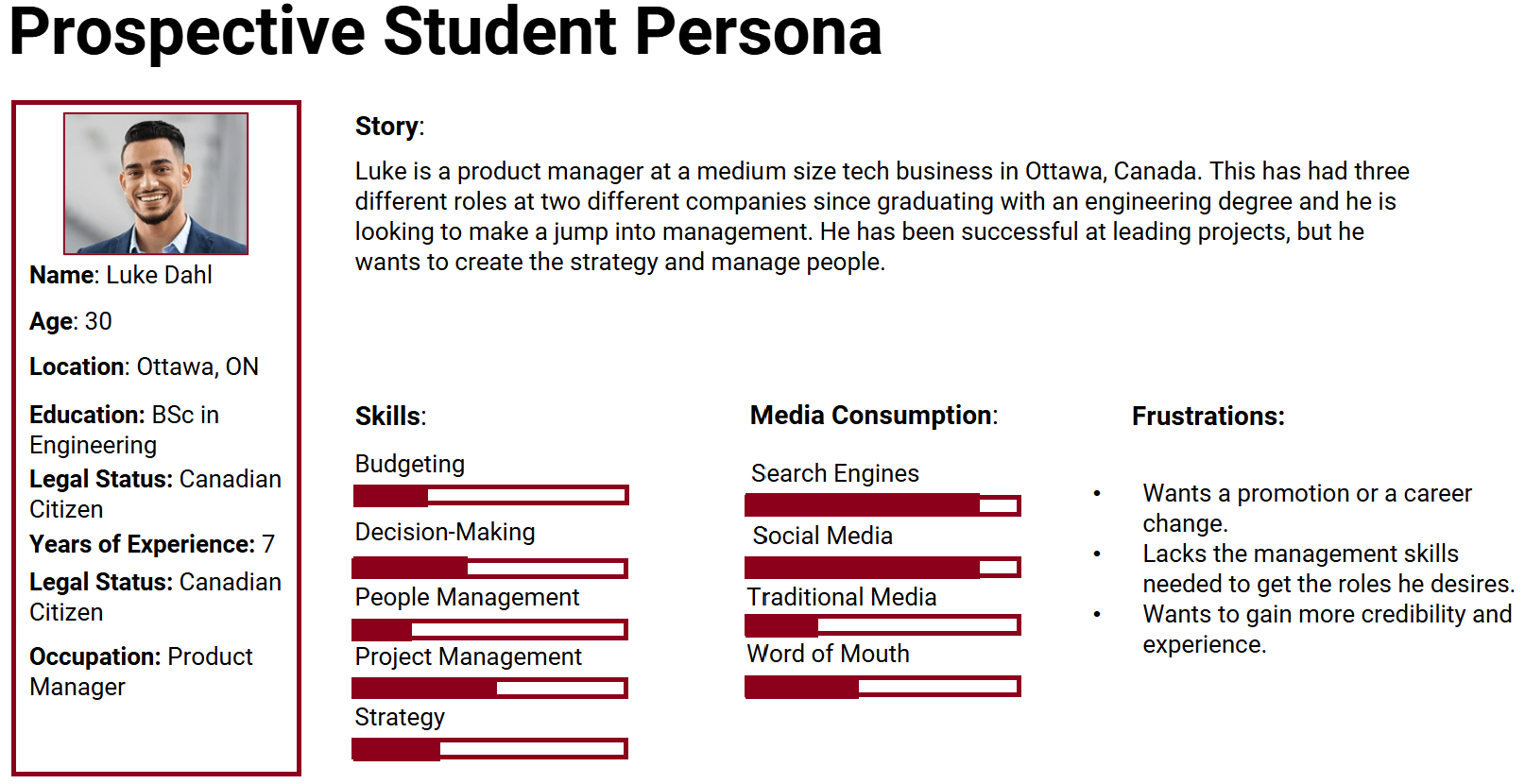AI Audience Persona Generation: How AI Can Transform Your Marketing
Are you using AI to update your audience personas?
Jump Ahead to Learn:
Understanding Audience Personas
The Role of AI in Persona Creation
How to Generate Audience Personas with AI
Conclusion
Too busy to read? Listen to the podcast summary. 3 minutes
Introduction to AI Audience Persona Generation
Knowing your audience is key to making your business stand out in today's fast-paced digital world. One of the best ways to understand your customers is by creating audience personas.
I wrote an article years ago on the basics of audience personas. With AI large language models taking off, it makes sense to show how AI can help speed up the process.
Audience personas are simple, fictional profiles representing different segments of your audience. By creating audience personas, you will get a better picture of your target customers. They will help you design better products, create more targeted marketing campaigns, and ultimately build stronger connections with your customers.
Traditionally, creating these personas meant hours of interviews, surveys, and data crunching. But what if there were a way to speed up the process while still capturing important details about your audience? That’s where AI can help.
Today, you can use large AI language processing models to conduct research and automate the creation of your persona. This method will use advanced tools like ChatGPT, Claude, DeepSeek, and Perplexity to make persona generation faster, more data-driven, and scalable.
In this article, I’ll cover everything you need to know.
From understanding what audience personas are, to how AI can help generate them, and finally, how to set up and refine these personas for your digital marketing strategy. Whether you’re a student, small business owner, or a seasoned marketer, this guide will show you practical, actionable steps to boost your strategy and make things go a lot faster.
Understanding Audience Personas
What Are Audience Personas?
An audience persona is a fictional representation of a specific segment of your audience. Think of it as a profile that sums up who your typical customer is. This profile might include basic details like age, location, and job title, as well as deeper insights like interests, behaviors, pain points, and how they consume media online. These details help you understand what motivates your customers, how best to serve them, and how to reach them online.
For example, you could have Luke above if you are selling online programs.
Imagine you own an online retail shop. One of your audience personas might be “Millennial Mia,” a 28-year-old urban professional who loves sustainable fashion and shops online for trendy, eco-friendly clothes. By creating personas like Mia, you can understand user behavior, tailor your marketing messages, content, and product offerings to better match your customers’ needs.
Why Do Personas Matter in Digital Marketing?
Audience personas are crucial because they put a face on your target market and help identify your ideal customer. They help you:
Create targeted content: When you know who you’re speaking to, your content marketing strategy will take off. You can write blog posts, design ads, and develop products that truly resonate. It also helps because most digital platforms ask you about your audience. If you know exactly who you are targeting, it will be much easier.
Improve engagement: Tailored messaging helps connect with your audience, leading to better customer relationships.
Increase ROI: By knowing what your customers want, you can focus your marketing efforts on strategies that work. Which will save you money and get results faster.
Challenges in Manually Creating Personas
Traditionally, creating these profiles involves collecting customer data from surveys, interviews, and market research. This can be very time-consuming and sometimes even inaccurate if the data is limited or biased. Plus, the process can be challenging for busy business owners who don’t have the luxury of spending weeks on research.
Since it takes a lot of time to gather data, many businesses just don’t do it. In these cases, people just guess what they think their target audience’s behaviors are. I don’t think I need to tell you, that this isn’t a very good idea.
The Role of AI in Persona Creation
How Does AI Work for Generating Personas?
AI technologies, especially advanced language models like ChatGPT and Claude, can analyze vast amounts of data quickly. These tools use machine learning to find patterns in your data. They can help you find demographics, interests, and buying habits. They can then use this data in a matter of seconds to create detailed personas based on that analysis.
For instance, one study found that AI-generated personas were rated just as believable and informative as those created by human experts. Models like Google’s Bard even scored high on empathy and clarity, showing that AI can capture nuances that matter for real customer interactions.
Benefits of AI Persona Creation
There are several clear benefits to using AI for creating audience personas:
Speed: AI can analyze large datasets in minutes, turning hours (or even days) of work into a quick process.
Data-driven insights: AI tools remove personal biases by basing personas strictly on data. We all have personal biases.
Scalability: Whether you need one persona or several, AI can generate them at scale, making it easier to adjust for different customer segments.
Up-to-date profiles: With real-time data integration, AI can update personas as your audience evolves. All you have to do is ask the AI to run the model again with the new information.
Step-by-Step Guide on How to Generate Audience Personas with AI
Let’s walk through the process using a simple five-step guide.
Step 1: Define Your Objectives
Before you start, ask yourself: What do I want to know about my audience?
For example, you might want to understand the buying habits of your online retail customers or the challenges faced by your service subscribers. Clearly defining your objectives ensures the AI knows exactly what data to focus on.
Step 2: Gather Existing Data
Next, collect any data you already have:
Internal Data: Use website analytics (Google Analytics), CRM records, and sales data.
Surveys and Feedback: Customer surveys, customer support feedback, or social media comments can provide valuable insights.
External Sources: Tools like Perplexity can help you pull in additional data from industry reports or online research.
Step 3: Craft Your AI Prompts
This is a crucial part of automated persona creation. Clear instructions lead to better results. Here’s an example prompt for ChatGPT:
“Generate an audience persona for a small online retail business targeting millennial women interested in sustainable fashion. Include demographics, interests, challenges, and buying motivations.”
Feel free to adjust this prompt for other tools like Claude or DeepSeek by simply changing a few words to suit their style.
Sample Prompt:
You are an expert researcher and your task is to research questions your target audience of [AUDIENCE] are asking online about [INDUSTRY], more specifically, driving traffic to their websites. This will help provide insights into their interests, pain points, and information needs. Here are the steps to follow: First, identify relevant online sources where your target audience is active and asking questions. Some examples could include: - Online forums or communities related to your industry / topic. - Question & Answer sites like Quora or Reddit. - Social media platforms where people post questions (Twitter (X), Facebook groups, etc.) - Review sites where people leave comments / questions about products or services. Once you have identified promising sources, analyze the content to extract common questions or topics that our target audience seems to be asking about. Pay attention to: Frequently asked questions (FAQs) or popular discussion threads. As you go through the sources, keep a running list of the questions and topics. Group related questions together into broader themes or categories. Finally, organize your findings into a presentable format. This could be: A bulleted list of the top question topics, ranked by frequency, or popularity. Please ask me clarifying questions until you are 95% confident you can complete this task successfully. If you are going to ask me questions, ask them one by one and I will answer until you are done.
Step 4: Analyze and Refine the AI-Generated Personas
Once you have the initial persona draft, review it carefully:
Does it match your expectations?
Are there any obvious gaps or biases?
Is the narrative engaging and clear?
It’s a good idea to generate a few versions and then choose the best one. Refine the chosen persona by asking follow-up questions or tweaking the prompt.
Step 5: Integrate Personas into Your Content Marketing Strategy
Now that you have a refined persona, use it to shape your marketing efforts:
Content Creation: Tailor your blog posts, videos, and social media content to speak directly to the persona’s needs.
Ad Targeting: Design ads for your paid ads strategy that resonate with the persona’s interests and pain points.
Customer Engagement: Use the persona to guide your customer service approach and product development. This could be through your social media or your customer relationship management (CRM) software.
For example, if your persona “Millennial Mia” values sustainability, consider highlighting eco-friendly products in your marketing messages and emphasizing green practices on your website.
Conclusion: Embrace AI for Smarter Persona Creation
AI-driven audience persona generation is revolutionizing the way businesses understand and connect with their customers. By leveraging tools like ChatGPT, Claude, DeepSeek, and Perplexity, you can quickly transform raw data into actionable, detailed personas that drive your marketing and design strategies.
Not only does AI persona creation save time and reduce costs, but it also provides data-driven insights that can uncover hidden audience segments. However, remember that while AI is a powerful tool, it works best when combined with human creativity and critical thinking. Always validate and refine the personas to ensure they truly reflect your customers.
If you have any questions or want to share your experience with AI-driven persona creation, feel free to reach out. I would love to keep the conversation going and learn together how to make the most of these exciting new tools.




